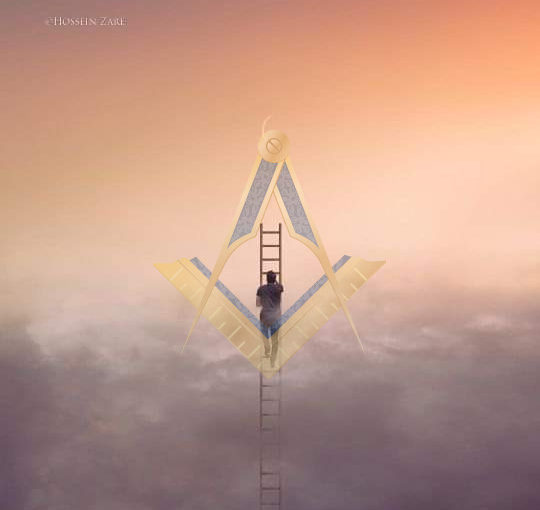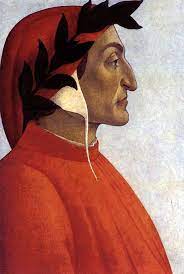Jacob’s Ladder is possibly among the most enigmatic and obscure of all the symbols found in Freemasonry. Its name can be traced back to a metaphorical allusion in the Bible, but more on this later.
Both the First Degree Tracing Board and the Second Degree working tools (long version) include the Jacob’s Ladder. This symbol can also be found on the Mark Tracing Board, as well as in Holy Royal Arch Chapter.
Thomas Dunckerley , founder of Mark Masonry, is credited with introducing the Masonic emblem of the ladder into the Masonic ritual in 1776. I recommend that you read the interesting life of this well-known Freemason, but doubtful character, by visiting this page at Tetraktys.
The ancients thought there could be no evolution without previous involution and indeed the Scripts say: “no man hath ascended up to heaven but he who came down from heaven” (John 3.13).
Man is a composite of natural elements that have been assimilated into him; the mineral kingdom is in his bones, the vegetable kingdom in his tissues and the animal world is in his brute impulses and appetite. He’s basically a microcosm; a synthesis of all that is present in the planes of existence beneath him.
In addition to the four kingdoms that we observe in nature – human, animal, plant, and mineral – we can rightfully imagine a fifth kingdom, because it is not possible that evolution would lead to a cul-de-sac. It is the Kingdom that Freemasonry invites us to contemplate and then enter, it is the realm of the Soul, of God.
The Persian sage of the 13th century Jalāl ad-Dīn Mohammad Rūmī wrote:
From the moment I came into the world of existence A ladder was placed before me that I might escape. I died as a mineral and became a plant; I died as a plant and became an animal; I died as an animal and became a man. When did I ever grow less by dying ? I shall die as a man to become an angel.
The two parallel sides of the Jacob’s Ladder represent the two Pillars: Boaz and Jachin. They reflect the positive and negative underlying concepts of Yin and Yang, Light and Darkness, Good and Evil, which run across the planes of the Universe.
The ladder’s transverse rungs serve to bring the two opposing principles together. They represent the progression of life through the Kingdom of Nature, as well as the evolving level of consciousness that man may attain as he progresses up the ladder.
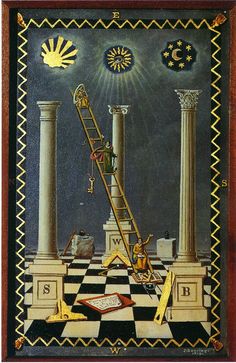
Each rung of the ladder also represents a virtue or moral obligation:
- Temperance
- Fortitude
- Prudence
- Justice
- Faith
- Hope
- Charity
As a symbol of moral and intellectual progress to perfection, the ladder existed almost universally in antiquity, whether depicted as a series of steps or gates or in some other form.
In the Persian Mysteries of Mithras there was a ladder with seven rungs, each one made of pure metal and labeled with the name of a guarding planet.
- Lead for Saturn
- Quicksilver for Mercury
- Copper for Venus
- Tin for Jupiter
- Iron for Mars
- Silver for the Moon
- Gold for the Sun
The ladder rungs were supposed to be unlimited for the Hebrews, but the Essenes reduced them to the following seven.
- Strength
- Mercy
- Beauty
- Eternity
- Glory
- the Foundation
- the Kingdom.
The reason for choosing the number seven is that it was considered mystic, magical. The Creation took seven days, and the Babylonians had seven sacred heavenly bodies, namely:
| Sumerian language | Celestial object | Presiding deity |
| Aku | Moon | Sin/Suen |
| Bišebi | Sun | Šamaš |
| Dapinu | Jupiter | Marduk/Amarutu |
| Zib/Zig | Venus | Ištar |
| Lu-lim | Saturn | Ninib/Nirig/Ninip, Anu[7] |
| Bibbu | Mercury | Nabu/Nebo |
| Simutu | Mars | Nergal |
Men go through seven stages in their life and William Shakespeare – through his character Jaques in As You like It – describes them as:
- Infancy
- Schoolboy
- Teenager
- Young man
- Middle aged
- Old aged
- Dotage & death
Every seventh year is Sabbatical for the Jews, and in mythology the seventh son of a seventh son is said to be born with particular abilities.
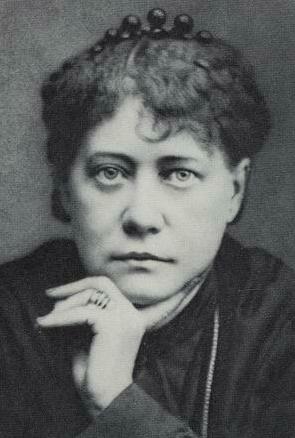
H. P. Blavatsky in the Teachings of Theosophy characterizes man as made up of Seven Principles, separated into a Higher Triad and a Lower Quaternary.
- The divine part
- the spiritual part
- the intellectual part
- the passion part
- the vital part
- the astral part
- the physical part
The first three of these comprise the Higher Triad and they last forever, while the lower four last just for one lifetime and are new in each of the lifetime that we experience.
However, keep in mind that the number of rungs of the Jacob’s Ladder depicted on a Tracing Board may vary based on the amount of space available. In consequence the number is sometimes reduced from seven to just three, representing the virtues of Faith, Hope, and Charity.
The variation in the number of rungs displayed is also down to a practical reason: the necessity of hiding a higher degree secret from the view of an EA or FC. In the old days this gave an aura of mystery and secrecy to Freemasonry, but now that everything is easily available on the internet, I feel free to disclose that:
- 3 rungs or/and steps apply to the Initiation of an Entered Apprentice
- 5 rungs or/and steps to the passing of a Fellow Craft
- 7 rungs or/and steps to the raising of a Master Mason
Notably, the ladder even appears in the third Book of Dante Alighieri’s Divine Comedy, which is dedicated to the portrayal of Paradise. In the Cantico XXII, it is described as nearly without end [1]:
Our ladder reaches even to that clime;
And so, at giddy distance, mocks thy view.
Thither the patriarch Jacob saw it stretch
Its topmost round; when it appeared to him
Benedetto da Norcia, who was considered the founder of western monasticism, wrote [2] :
Hence, brothers, if we want to reach the highest summit of humility, if we desire to attain speedily that exaltation in heaven to which we climb by the humility of this present life, then by our ascending actions we must set up that ladder on which Jacob in a dream saw angels descending and ascending. Without doubt, this descent and ascent can signify only that we descend by exaltation and ascend by humility. Now the ladder erected is our life on earth, and if we humble our hearts, the Lord will raise it to heaven. We may call our body and soul the sides of this ladder, into which our divine vocation has fitted the various steps of humility and discipline as we ascend.
WHY NAME IT JACOB’S LADDER ?
The account of the primogeniture battle between Jacob – or Israel, as he will eventually be known – and his brother Esau, both sons of Isaac, is told in the Book of Genesis.
Isaac, who was very old and nearly blind, asked Esau to go and kill some venison and have it cooked for dinner so that he would not die without having eaten, for the last time, a meat he loved so much. When Isaac’s wife Rebekah learned of this, she summoned her younger son Jacob and told him to forthwith go and kill two lambs from their flock so that she might cook the meat to taste like venison and Jacob – instead of Esau – could receive Isaac’s blessings to rule over the people.
When Esau learned of the lie, he vowed to slay his brother when he returned thus prompting Jacob to seek sanctuary at his mother’s brother Haran’s house in Laban.
At the close of his first day journey to Laban, Jacob dreamed of a ladder whose foot rested on earth and whose top reached to heaven, and on which some creatures [3] were ascending and descending. And the Lord stood at the summit and told Jacob: “I am the Lord, God of Abraham your (grand) father and the God of Isaac: the land where you lay I will give to you and to your seed”.
The next morning, Jacob took the stone he had used as pillow, fashioned it into a Pillar [4] and poured oil on top of it (Genesis 28:128). Following that, he named the location [5] Bethel [6], which means “in front of the All-Powerful.” Then, moved with gratitude, Jacob sanctified the spot as God’s house and promised to recompense the Lord with one tenth of whatever he would get from the people he had been blessed to rule.
What a way to show love for our Creator and yet this is in the Bible….!
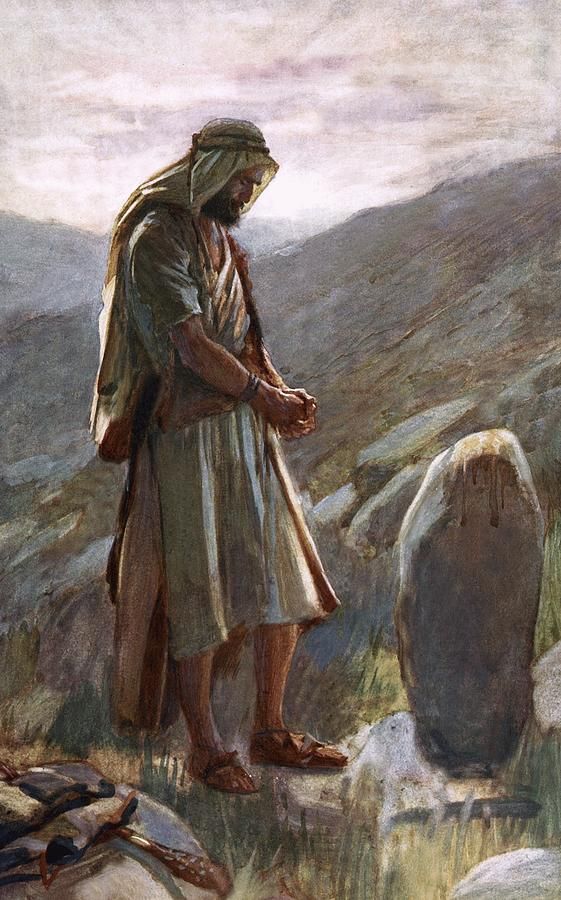
The strong relationship between esoteric freemasonry and kabalistic principles is well recognized and widely accepted among informed Freemasons.
When depicted with only three rungs, the exoteric [7] interpretation assigned to the symbol of Jacob’s Ladder in the Entered Apprentice degree lecture, is the portrayal of the cardinal virtues of Faith, Hope, and Charity. In the version of the Lecture, with the ladder illustrated with seven rungs, the virtues of Temperance, Fortitude, Prudence, and Justice are added.
In conclusion, it appears that the ladder can be interpreted in two ways. The first [8] is that it teaches man about the connection between life on earth and life in the “world of heavenly spheres,” with the creatures descending being prophets from a higher plane of awareness who come down to earth to pass on their wisdom.
The other view [9] is that the ladder represents stages of spiritual evolution, resulting in the entities that ascend and descend on it , as representing a manifestation of the “mobility of man’s spirit”, as mentioned earlier in the paper.
A simple and concise definition of this Masonic symbol is that Jacob’s Ladder represents the ladder of consciousness by which man undertakes the mystical ascent.
So mote it be.
NOTES
[1] (…) e mostra scala infino ad essa varca, onde cosi’ dal viso ti s’invola. Infin lassu’ vide il patriarca Jacobbe porger la superna parte, quando li’ apparve d’angeli si’ carca.
[2] Original Latin text: “Unde, fratres, si summae humilitatis volumus culmen attingere et ad exaltationem illam caelestem ad quam per praesentis vitae humilitatem ascenditur volumus velociter pervenire, actibus nostris ascendentibus scala illa erigenda est quae in somnio Iacob apparuit, per quam ei descendentes et ascendentes angeli monstrabantur. Non aliud sine dubio descensus ille et ascensus a nobis intelligitur nisi exaltatione descendere et humilitate ascendere. Scala vero ipsa erecta nostra vita est in saeculo, quae humiliato corde a Domino erigatur ad caelum. Latera enim eius scalae dicimus nostrum esse corpus et animam, in qua latera diversos gradus humilitatis vel disciplinae evocatio divina ascendendo inseruit“.
[3] They are called Angels of God in the Bible but one of the creatures will call himself “Elohim”. Elohim in King James’s Bible translates as “angel” only once, but it translates as “Judge” everywhere else.
[4] A pillar that would symbolically link Earth with Heaven
[5] The original name of the place was Luz and it was some ten miles north of Jerusalem
[6] Although some claim that Jacob’s dream occurred on Mount Moriah, which is the later location of King Solomon’s Temple (Sacret Secret by Mike Neville, page 37)
[7] That of the Jewish Philosopher Maimonides (Moses ben Maimon, 1135/8-1204 AD (xvi))
[8] That of R. Hayyim of Volozhin (1740-1821)
[9] Exoteric is information which is freely available to the general population. Esoteric is instead information which has hidden meanings and is made available only to those select few who have been properly indoctrinated to understand it.
SOURCES
- Sacret Secrets by Mike Neville
- Some further notes on Craft symbolism by W Bro A.L.Hartland
- Jacob’s Ladder by Paul Gardner, The Square magazine, June 2019
- The Masonic Ladder and the Great Chain of Being by Bro WM Steve Burkle KT, Pietre + Stones
- Freemasons’ Guide and Compendium by Bernard E. Jones
- Wilkipedia
- MUSIC AND THE CRAFT – LUIGI BORGHI , A FREEMASON OF THE NINE MUSES LODGE - October 31, 2022
- SPILSBURY – THE FREEMASON FATHER OF FORENSIC SCIENCE - April 18, 2022
- THE MASONIC GLOVES - March 21, 2022

